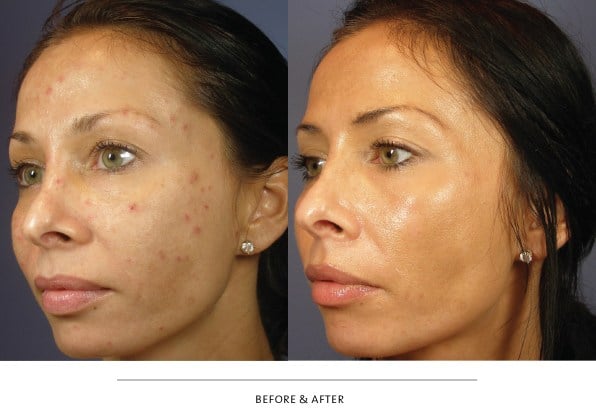Blepharoplasty is a surgical technique that can dramatically eliminate the signs of aging and improve a tired or upset appearance by removing the excess skin, fat and tissue that cause droopy, baggy eyelids. It is one of the most popular aesthetic procedures performed in the United States, and has a tremendous impact on the overall appearance of the face. Several factors contribute to an appearance of aging around the eyelids, including loss of skin elasticity, years of sun exposure, downward pull of gravity, heredity, and thinning of tissue. These factors lead to a condition called dermatochalasis, or excess skin, wrinkles, fat and tissue around the eyelids. Though dermatochalasis is often associated with aging, some patients may develop this condition earlier in life.
Blepharoplasty surgery is not only performed for cosmetic purposes to enhance appearance, but it can also improve visual function. Blepharoplasty is performed for reconstructive purposes to correct visual impairment caused by excess skin that hangs down to obscure vision. Ptosis or eyelid droop can also occur in conjunction with excess upper eyelid skin. Ptosis occurs when the upper eyelid droops from lack of normal eyelid support. Children with ptosis can be a serious condition as a drooping eyelid from a poorly developed eyelid muscle can interfere with visual development. The majority of patients develop ptosis due to aging changes, which includes stretching or detachment of the eyelid muscle responsible for elevating the upper eyelids. Dermatochalasis can cause a “secondary” ptosis, with excess skin or tissue resting on the upper eyelid causing the eyelid to droop. Ptosis is also associated with trauma, prior ocular surgery, conditions such as thyroid disease, blepharospasm, nerve palsies or progressive neuromuscular conditions such as myasthenia gravis.
Patients may complain of visual obstruction superiorly, fatigue with reading, or brow ache from lifting the forehead muscles to compensate for the heavy, drooping eyelids. In these instances, blepharoplasty or ptosis surgery is considered medically necessary and is usually covered by insurance. Patients undergo evaluation by the surgeon, photographs and a visual field test to demonstrate the degree of visual field defect before surgery. Insurance and Medicare approval for functional eyelid surgery can vary, and continues to evolve with healthcare changes. When blepharoplasty of the upper or lower eyelids is performed to improve one’s appearance in the absence of any signs or symptoms of functional abnormalities, the procedure is considered cosmetic and therefore not a covered service by Medicare or private insurance carriers.
Surgeons who perform blepharoplasty and ptosis surgery must have an excellent knowledge of the anatomy of the eyelids and the face as well as an appreciation of the aesthetic and functional goals of each patient. Though traditional techniques of blepharoplasty should be known, the surgeon must customize the approach that best suits each individual patient. Facial rejuvenation is an evolving art and science, and new better techniques are continually developing.







